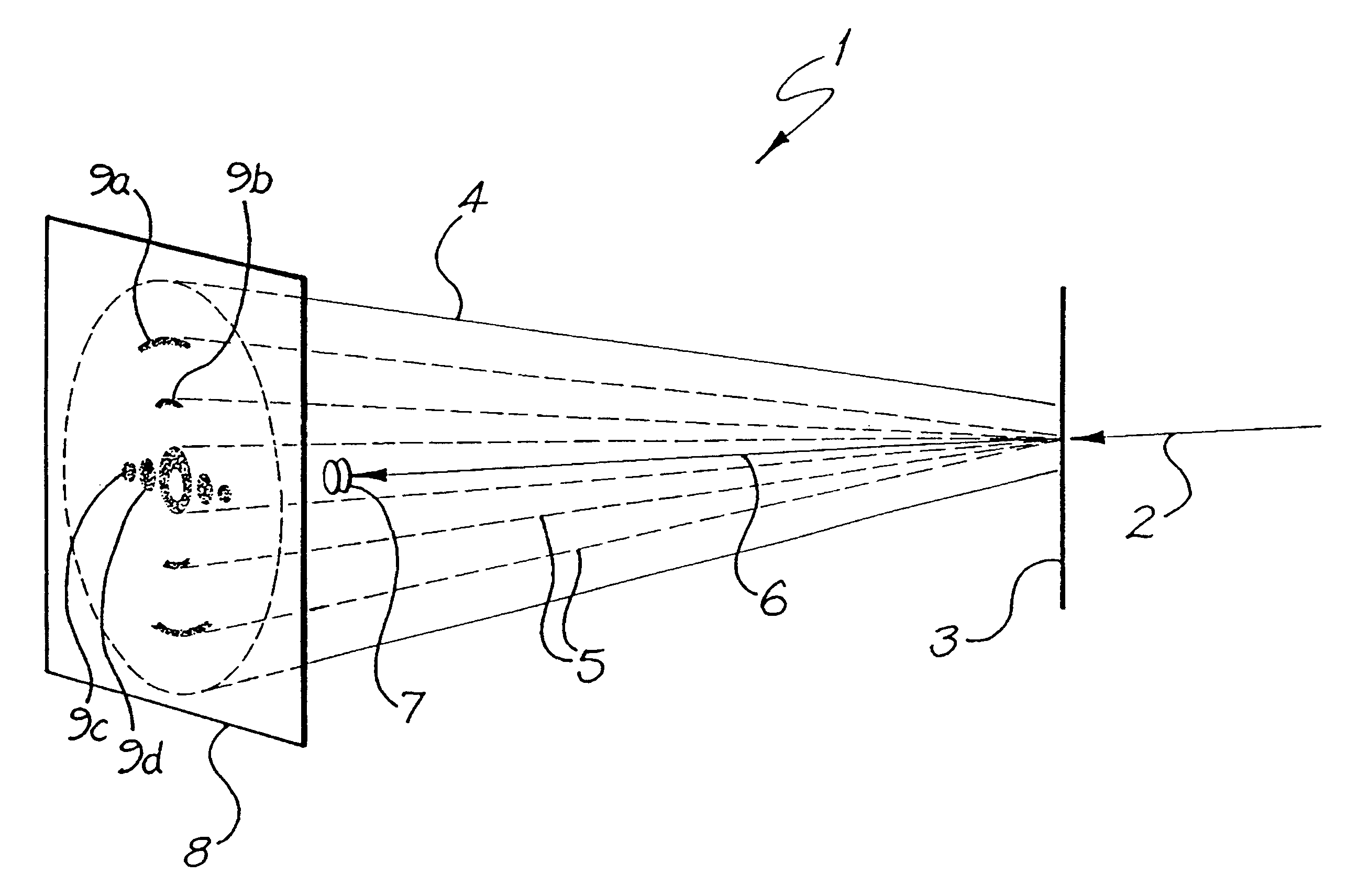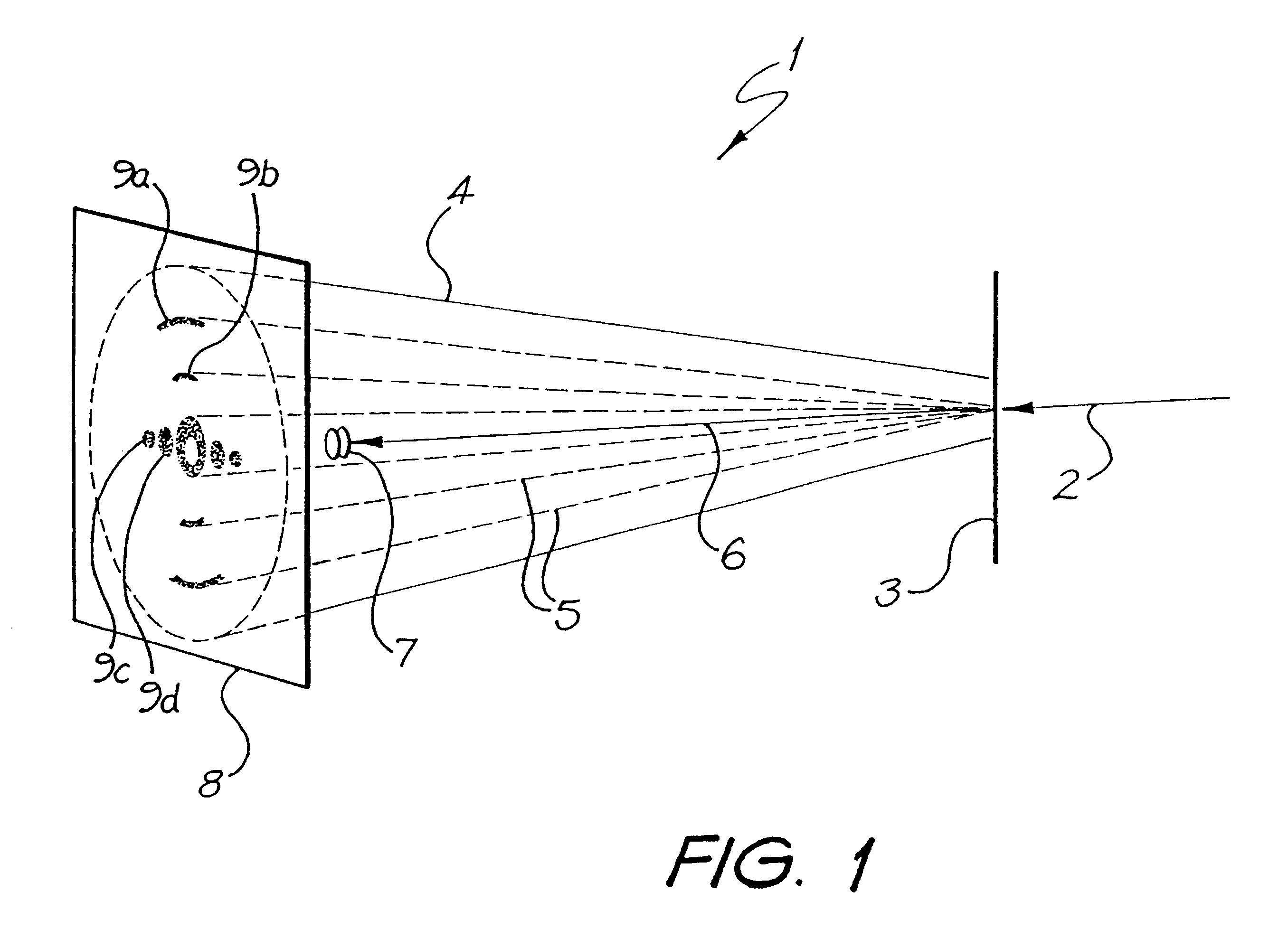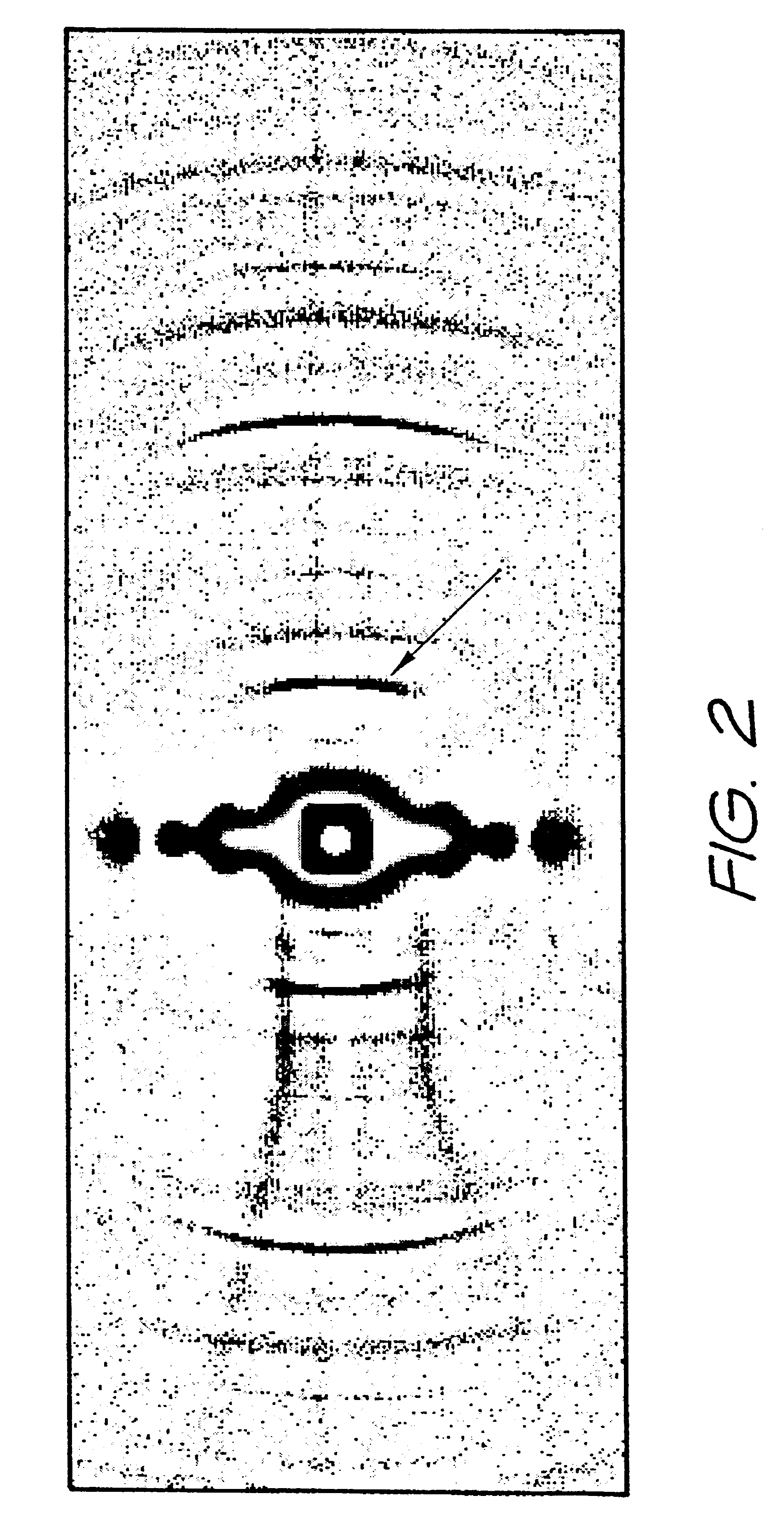Using hair to screen for breast cancer
a technology of breast cancer and hair, applied in the field of breast cancer screening using hair, can solve the problems of not being able to extend to all women, affecting the survival rate of women, and taking weeks to complete tests, so as to achieve the effect of reducing absorption losses
- Summary
- Abstract
- Description
- Claims
- Application Information
AI Technical Summary
Benefits of technology
Problems solved by technology
Method used
Image
Examples
example 2-- scalp
EXAMPLE 2--SCALP HAIR
Clinical Trial (Manchester, UK)
To investigate the observation made in Example 1, a larger clinical trial set was provided by Christie CRC Research Centre (Manchester, UK) for a further double blind experiment. This was carried out on the Australian National Beamline Facility at the Photon Factory (Japan) and the results verified at higher resolution on the BIOCAT
Beamline at the Advanced Photon Source (Chicago, USA). The results initially showed some ambiguity.
example 3-- scalp
EXAMPLE 3--SCALP HAIR
Further Investigation
The ambiguity demonstrated in Example 2 was investigated where it was shown that permanent setting treatments were the cause of the problem. Such hair treatments invariably lead to the breakdown and remaking of covalent bonds producing structural irrevocability. A subset of the original large set was obtained wherein any samples from persons who had had such hair treatments over the last three months were removed.
example 4
X-ray Diffraction Studies of Pubic Hair (Sydney, Australia)
In order to obviate the problems demonstrated in Example 3, a set of pubic hair was supplied by the Oncology Unit, St George Hospital (Sydney, Australia). For the experiment, single and multiple strands of hair were washed in distilled water, dried and placed in specially constructed cells to hold them taut in and normal to the x-ray beam. At all facilities the x-ray scattering patterns were recorded using Fuji-BAS imaging plates. The irradiation wavelengths varied from 1 to 1.5 A with camera lengths ranging from 400 to 2400 mm. Exposure times varied from 10 seconds to 10 minutes depending on the synchrotron source and the x-ray optical configuration.
Analysis of data from each facility showed that the patterns were consistent and revealed that the structure of the .alpha.-keratin fibrils does not change. The meridional reflections for all samples correspond to the expected infinite lattices of 47.0 nm and 62.6 nm. The packin...
PUM
 Login to View More
Login to View More Abstract
Description
Claims
Application Information
 Login to View More
Login to View More - R&D
- Intellectual Property
- Life Sciences
- Materials
- Tech Scout
- Unparalleled Data Quality
- Higher Quality Content
- 60% Fewer Hallucinations
Browse by: Latest US Patents, China's latest patents, Technical Efficacy Thesaurus, Application Domain, Technology Topic, Popular Technical Reports.
© 2025 PatSnap. All rights reserved.Legal|Privacy policy|Modern Slavery Act Transparency Statement|Sitemap|About US| Contact US: help@patsnap.com



